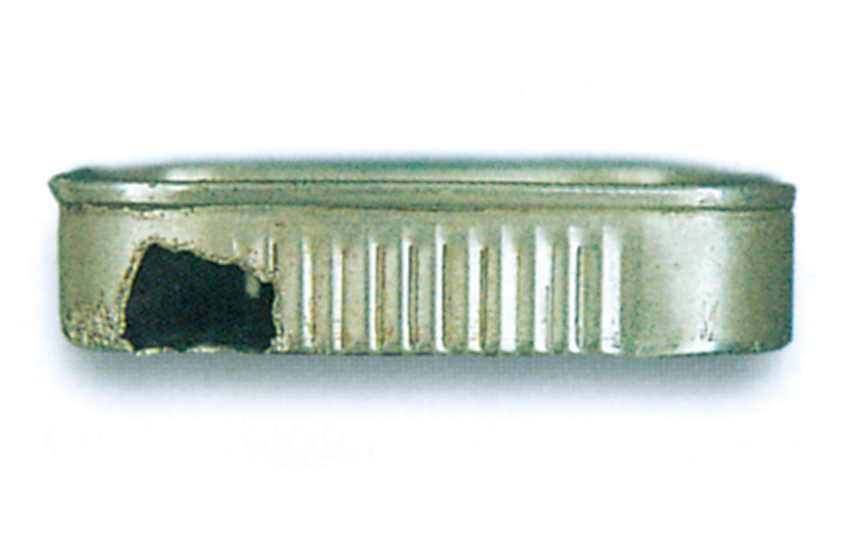The outer casing or exoskeleton of an insect consists mainly of the tough, flexible material known as chitin, which is more or less strengthened with the horny material sclerotin. When completely hardened, as for example in the mandibles, this is the hardest material that the animal world has succeeded in producing. It is harder than lead, zinc, aluminium and copper, and this means that some insects are able to gnaw these materials.

The enamel on our teeth and on those of other mammals is almost as hard. It is scarcely so well adapted for gnawing hard materials, because it is relatively brittle. However, some rodents can gnaw the softer metals.
No animal will gnaw a metal for its own sake, but they do so when for some reason it is in their way.
In some cases metal sheets are laid directly on timber and if the latter has been attacked by pests the metal may suffer damage when the adult insects emerge from the timber and gnaw their way out through the metal. The most serious damage occurs when a roof covering of copper, lead or zinc is laid on laths containing the larvae of wood wasps or of the beetle Callidium. The adult insects make large holes in the metal which allow damp to enter and the timber will then be attacked by fungus.
Wood-boring beetles may also work their way out through metal plates.
Insect pests of timber have been known to gnaw through electric cables and thus cause a short circuit.
Rats and mice also gnaw electric conduits, causing current failure, and they may do so even when the cables are protected by lead. They will sometimes gnaw food cans made from soft metals.




